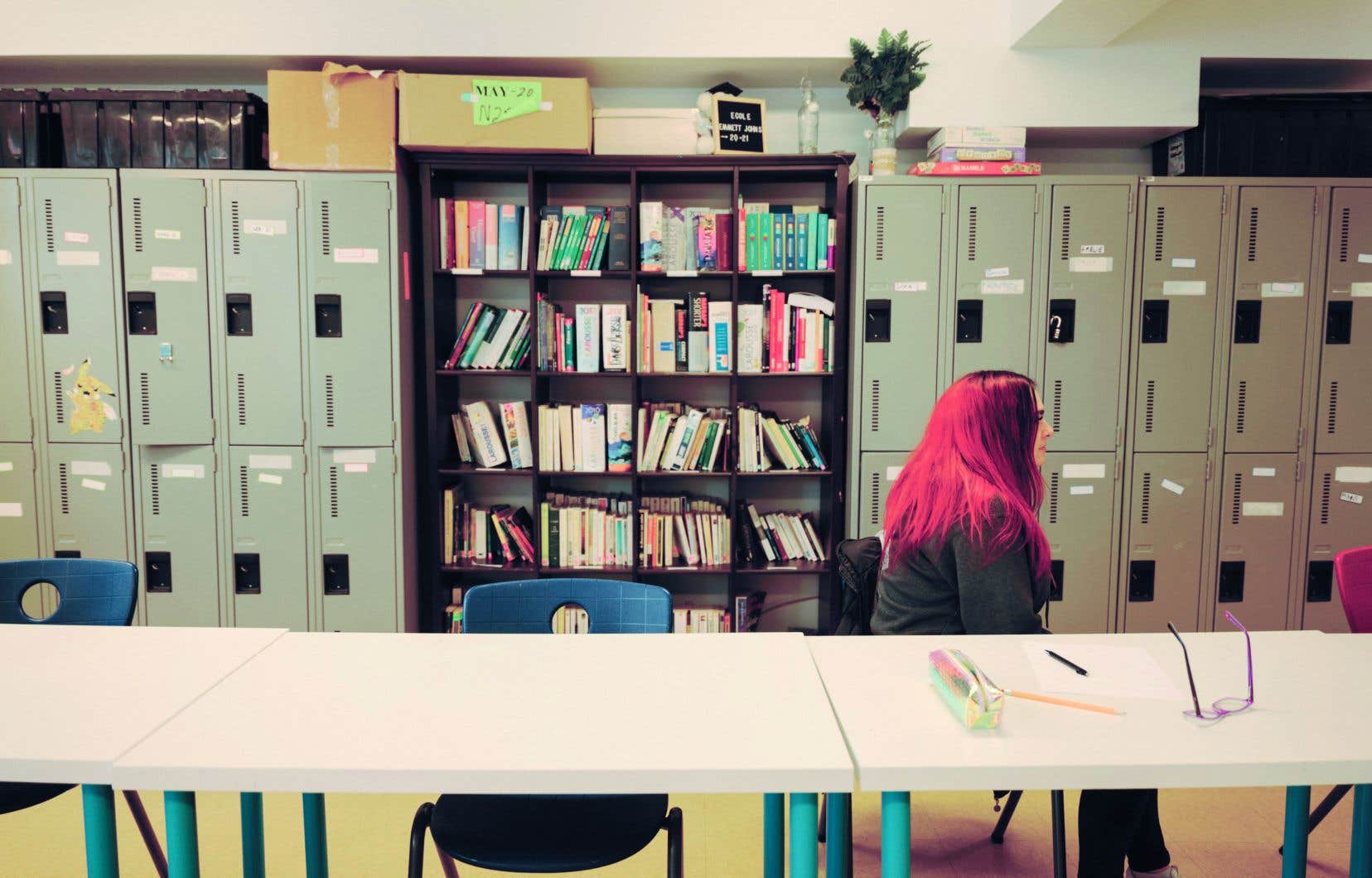She is not yet 20 years old and, yet, Cathy has “walked around a lot” since she left the youth centers almost two years ago. She is sometimes afraid of being “ran up on the street”, but she always finds a place to sleep: with friends or a family member, in youth shelters. One day, a worker guided his steps to the Chez Pops day center. And that’s where she reconnected with her dreams, in a school for street youth, located within the day center where they go to seek a little respite.
The line overflows onto Ontario Street, near Papineau Boulevard. Inside the day center In the street, also known as Chez Pops, in reference to the founder, Emmett Johns, dozens of young people aged 16 to 25 wait their turn to go have a good hot dinner at the cafeteria.
Some sport flashy looks, but most keep a low profile. Some obviously didn’t sleep all night. They come looking for a little warmth, that which warms the body and the hearts. They come to eat, but also to take a shower, get clean clothes, do art therapy, let off steam on the drums at the music studio, meet a psychologist, a nurse or social reintegration workers.
Shortly after 1 p.m., a handful of young people went upstairs to go to Emmett-Johns High School. Unlike the large comprehensive schools, the school here is reduced to a single classroom, one room among many others in the heart of the refuge. But it is nevertheless a school recognized by the Montreal School Services Center which welcomes young people most on the margins of society.
Abandoned young people
“Recently, in the news, there has been a lot of talk about schools, the strike, the debate between private and public. We have all those who do not find themselves in traditional school, or who the school may have, in one way or another, abandoned”, summarizes Marie-Noëlle L’Espérance, director of the organization Dans la Rue.
She reminds us that it is not the young people who abandoned school, but the school which abandoned them. The place, which should be “a protective factor”, has failed for these young dropouts who are now on the street, she says. By “quibbling” them because they are not concentrated enough, while they are “too overwhelmed by their personal situation” and have an empty stomach. By imposing a very strict framework to which some young people are unable to comply. By delaying offering certain services to children with learning challenges “because the parents did not have $2,000 to get a neuropsychology diagnosis.”
Her colleague Sylvie Cormier, coordinator of social integration services, agrees. “It’s not the young person who has a second chance, it’s us who have a second chance to show him that school can be for him. It’s up to us to adapt. »
Learning is personalized and students benefit from psychosocial support to enable them to persevere despite the countless challenges they face in their daily lives. They can eat lunch and dinner for free in the cafeteria and receive help paying for transportation. In short, we put everything in place to maximize their chances of success.
“A street school allows us to offer them a place where they will not feel judged and where they can walk and exist with their own colors,” explains M.me Hope. Sometimes, they have achievements that go back to a level of 6e primary year. But here, they do not have the feeling of being judged despite the age at which they have reached. »
Rekindle the spark
Currently, there are only five students attending the school, but around ten more are expected to join them soon. “It works,” assures coordinator Sylvie Cormier. Young people want to do something else. A return to school is super important for them. »
“We want to be the spark, to give them the taste and the possibility of projecting themselves into life,” adds Marie-Noëlle L’Espérance. If the majority of young people have the opportunity to explore different career options during their school career, those who end up at the shelter often have limited horizons, she notes. “When the only thing you know is working at the convenience store and you discover that you have the right to believe in yourself and have a future, it’s huge. »
And it works, if we trust the words of young people that The duty met.
Xavier, 20 years old, puts all his energy into finishing his mathematics to continue his studies at CEGEP in violin making. Access to the music room, where he can strum his guitar with his friends, helps him stay motivated.
Kiora, 24, wants to study herbalism. At the time, she was singled out for being “too slow,” she confides bitterly. She is therefore happy to be able to move forward at her own pace today. “And I have the impression that my challenges are taken into account a little more,” adds the young woman with heavily made-up eyes and endless eyelashes.
Cathy wants to go to CEGEP to work with young delinquents or children. She never wanted to drop out of school, she says, but a series of circumstances made her take a few detours at the age of 16. Since then, she has wanted to return to school, which she was able to do at the shelter. Alongside her studies, she is trying to get her life back on track. She got help doing her taxes, received social assistance and qualified for the rent supplement program. But everything is not easy. “I’ve been looking for an apartment for three months; I’ve had plenty of visits, but the owners aren’t too flexible with the schedule. » She shrugs, sighing. “I’m just trying to get by. I haven’t had any luck in life. »
